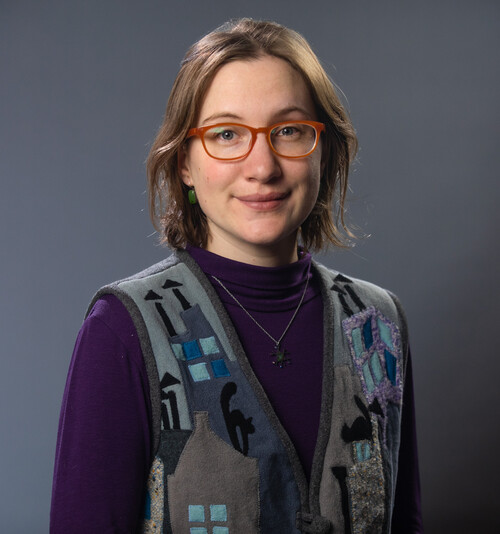Lydia Krasilnikova

Harvard Horizons Scholar Lydia Krasilnikova co-led an 80-person, multi-organization collaboration examining the July 2021 COVID-19 superspreader event in Provincetown, Massachusetts. The outbreak contributed to the US Center for Disease Control’s decision to resume its recommendation of indoor masking later that year. Her Horizons project, "Tracing COVID-19 Outbreaks to Learn about the Effect of Vaccination and Boosting on Risk of Infection and Transmission," showcases this work, examining how risk of infection and onward transmission change with vaccination status to help public health officials respond to the ongoing threat of SARS-CoV-2.
The Massachusetts Department of Public Health (DPH) reached out to the Broad Institute laboratory of Krasilnikova’s dissertation advisor, Professor Pardis Sabeti, soon after the outbreak in Provincetown. Krasilnikova, a member of the Sabeti Lab, had worked with the DPH previously to reconstruct and learn from other outbreaks before the COVID pandemic hit. The state sent test samples from Provincetown to Broad where they were sequenced by the institute’s genomics platform.
By reading the genetic code—composed of the RNA base nucleotides adenine, uracil, cytosine, and guanine (AUCG)—from overlapping snippets of the virus, and lining them up against a reference, the Broad genomics team reconstructed the full genome of each sample. Using that data, the Sabeti Lab scientists were able to identify potential transmission links in one of two ways.
The simplest case was when the COVID genome transmitted by one person was identical to the one that showed up in another. (The genome could also have been more or less identical with small changes—say, a location with a different base nucleotide in one person's sequence than in another's.) Alternatively, maybe the genomes weren’t identical but the version that showed up in one person had a low-frequency mutation that appeared in the test sample of another—like a printing press that left a small imperfection in the pages that rolled through it.
“SARS-CoV-2 mutates when it’s transmitted to from person to person,” Krasilnikova says. “Using a process called genomic epidemiology, we were able to use those mutations to track who infected whom—at least potentially.”
Even with the genetic data, though, it can still be a challenge to trace transmission of the virus. “You could have a situation where one person infected another who we might not have sampled, and then that person transmits to a third person we did sample,” Krasilnikova says. “Or it could be that there was another person that we didn't sample and they infected two other people. In each case, COVID in any two of the three people could have the same genome but not because the virus was transmitted directly between them.”
The outbreak in Provincetown, however, was a discrete event among a discrete population at a particular time. Krasilnikova says that the state’s Community Tracing Collaborative worked with local officials and those affected to do “an absolutely fantastic job” of identifying contacts and people who could potentially be infected with the virus.
“In addition to genomic data, we used information about when the samples were collected as well as the symptom onset date provided by the Department of Public Health,” she says. “Thanks to the contact tracing effort on the ground, we were able to identify transmission events with high confidence. The dream is to have this information in true real time, but this is certainly the closest we've ever gotten. In the future, this process could extend the range and impact of contact tracing efforts.”
With tens of thousands of new cases and hundreds of deaths each day, Krasilnikova says that the pandemic is still with us—despite the fact that the Biden Administration in January ended the COVID-19 public health emergency. She hopes that her research will inspire more work to improve COVID response efforts and make genomics a standard part of contact tracing.
“COVID can be transmitted just by standing in the same enclosed space—an elevator, a bathroom—as someone who was there 20 minutes earlier,” she says. “An outbreak can occur in many different places among people who’ve never even met. We had a lot more ability to detect transmission events by analyzing genomes than we would have had to through standard contact tracing alone. It made the impossible possible.”

